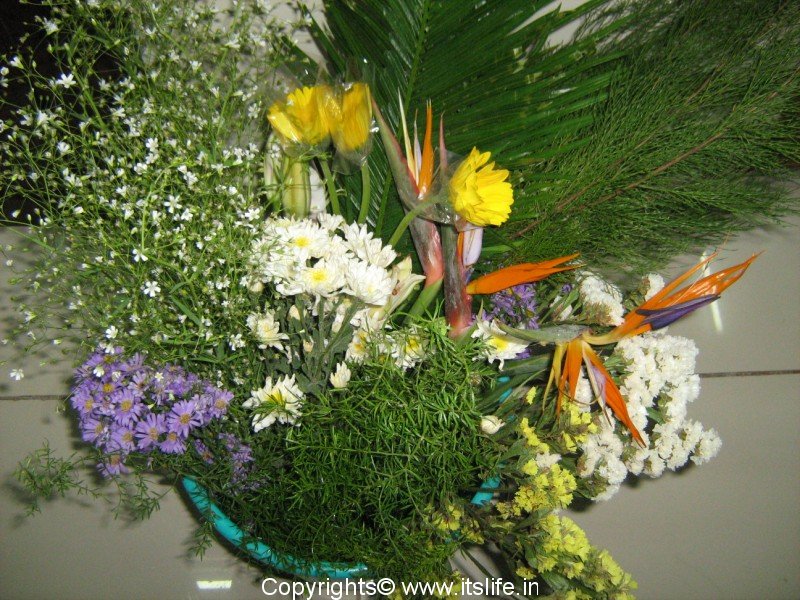After Ohara school, So-Getsu school of Ikebana was founded in 1928 by Sofu Teshigahara. It is one of the best-known schools of flower arrangement in Japan. In this style driftwood and other dry materials are used for floral compositions. In this art, there is always an awareness of the cosmic forces. The spirit of the season is also in evidence and it is reflected in the choice of material and in the general character of the arrangement.
Factors that govern So-Getsu style of arrangements are
- Lines and Design
- Flowers and Foliage
- Container
- Place
Lines and Design
Study the branch of lowers carefully to see the latent beauty of line and then get down to the style. Suitable color should be subordinated to design. In some arrangements the beauty and color of flowers is important than lines for example, flowers like Geranium, Sweet Pea etc., These create design by placing few short and long stem flowers with space in between. No two lines are of the same lengths. All arrangements are based on three main lines –
- SHIN (0) – This is the longest stem. The symbol suggests the sun in heaven. This line is the main, so choose the branch with the strongest curve, the longest and the most beautiful. The length of the Shin is one and half the length/breadth of the container + ½ the height/width of the container.
- SOE – The symbol is a rectangle and it is the medium stem. The symbol suggests a man standing squarely on earth. This line follows the main line. Soe is ¾th of shin in length and Hikae is ¾th of Soe in length.
- HIKAE (∆) – The symbol is a triangle and is the shortest stem. The symbol suggests a mountain peak on earth. This line balances Both Shin and Soe.
- JUSHIS – The additional lines(fillers) are known as “Jushis”. The symbol for this is “T”. There can be any number Jushis in an arrangement and they should not be longer than the branch they support.
Flowers and Foliage
Restrict the material for the arrangement to two or three kinds, but not more than that. Usually branches are used as main lines and flowers are used as additional lines. Larger and darker blooms are lowest in an arrangement. Buds, smaller flowers and lighter shaded flowers are placed higher. Envisage the arrangement before choosing the flowers. Make the most of the material you have by choosing the right style, putting it into the right container and finally placing it in the right spot. See that it does not clash with the color scheme in the room. Bright arrangements against the entrance wall, arrangement with driftwood, dry flowers etc., in the drawing room and beautiful ferns and flowers without much scent on the dining table will be most appropriate.
Select flowers after deciding the type of arrangement. Study the background and the container. The quality and the foliage of flowers are very important in achieving a good result in the arrangement.
Container
The emphasis is on the arrangement and not the container so use a simple looking container so that it does not distract from the arrangement. The container should not have too many designs on it. It is always better to use sober colored containers. The material and the container should be in harmony with each other for example, delicate material for fine glass, rougher for earthen wares and ceramics.
Place
Visualize the final place the arrangement will occupy before choosing the container.
The different styles of arrangements
- Basic Upright Arrangement
- Wind Blown Arrangement
- Uke-Bana or Floating Arrangement
- Basket Arrangement
- Freestyle


